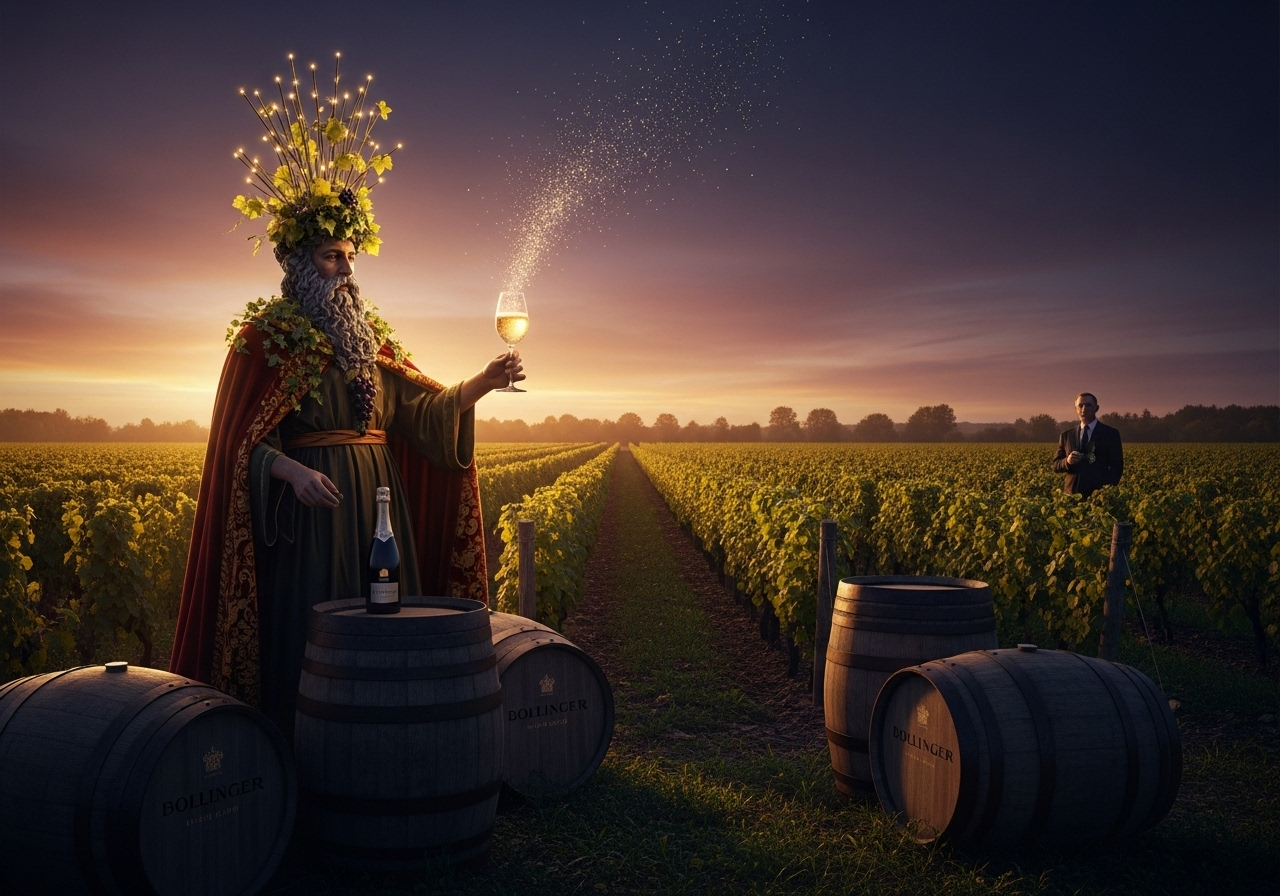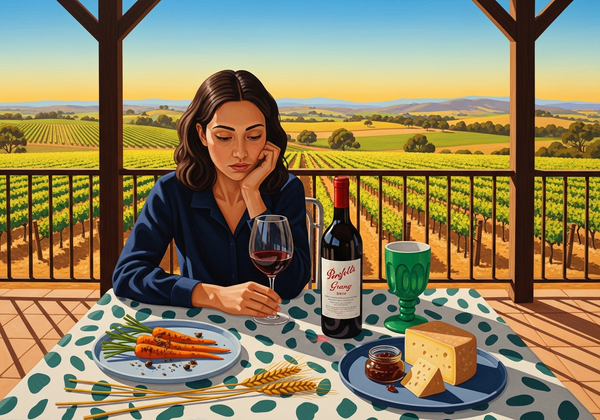Champagne Bollinger: The Power and the Pinot
Founded in 1829, Champagne Bollinger built its legend on Pinot Noir power, oak fermentation, and Lily Bollinger’s wit. From Special Cuvée to R.D. and Bond’s glass, it remains Champagne’s most enduring and uncompromising voice.

From aristocrats to Bond, Bollinger built its legend on Pinot Noir muscle, oak-aged tradition, and a refusal to bend to fashion.
The Origins: An English Merchant, a German, and a Widow (1829)
The story of Bollinger begins in 1829, when three unlikely partners — Athanase de Villermont (an aristocrat with vineyards but barred from commerce), Joseph Bollinger (a German merchant), and Paul Renaudin (a local winemaker) — founded a Champagne house in Aÿ, one of the region’s oldest wine villages.
Joseph Bollinger married into the family and gave his name to the brand. From the start, Bollinger had two trademarks: Pinot Noir dominance and serious, structured wines. In an age when many Champagnes were light and fleeting, Bollinger built its identity on depth, longevity, and weight.
The Widow Who Defined a House (1941–1977)
Like so many great Champagne houses, Bollinger’s soul was defined by a widow.
In 1941, Lily Bollinger inherited the house after the death of her husband Jacques. She transformed it into a global icon. Lily famously toured vineyards on bicycle, personally inspecting vines. When asked about Champagne, she gave her immortal quote:
“I drink Champagne when I’m happy and when I’m sad. Sometimes I drink it when I’m alone. When I have company I consider it obligatory. I trifle with it if I’m not hungry and drink it when I am. Otherwise, I never touch it — unless I’m thirsty.”
This was not just wit — it was branding genius. Lily embodied Bollinger: elegant, witty, uncompromising. She expanded the estate’s vineyard holdings and safeguarded its oak-aged, Pinot-heavy style.
The Style: Oak, Pinot, Power
What defines Bollinger in the glass? Muscle and richness.
- Pinot Noir: Over 60% of the blend in most cuvées, especially from the house’s stronghold in Aÿ. Pinot gives Bollinger its structure, power, and depth.
- Oak Fermentation: While most houses abandoned oak for stainless steel, Bollinger kept oak barrels for primary fermentation. This gives texture, complexity, and longevity.
- Reserve Wines: Bollinger keeps large stocks of aged reserve wines (some in magnum under cork). This adds depth to non-vintage blends.
The result? Bollinger is the most “Burgundian” of Champagnes: dense, vinous, structured — less aperitif, more meal companion.
The Wines: Icons of Depth
- Special Cuvée: The house’s signature non-vintage Brut, rich and Pinot-driven.
- La Grande Année: Vintage Bollinger, aged under cork, dense and precise.
- R.D. (Recently Disgorged): Lily Bollinger’s 1967 invention — vintage Champagne aged for decades on lees, disgorged late for freshness. The 1952 Bollinger R.D. was revolutionary and remains one of Champagne’s great icons.
- Vieilles Vignes Françaises: The unicorn — a Blanc de Noirs from ungrafted pre-phylloxera Pinot vines, producing minuscule quantities of legendary rarity.
The Bond Connection
Since 1956’s Diamonds Are Forever, Bollinger has been James Bond’s Champagne. The partnership was no accident: Bollinger’s powerful, masculine style fit the Bond persona perfectly. Today, when Bond raises a glass, it is almost always filled with Bollinger.
This link cemented Bollinger not just as a wine, but as a cultural symbol of power, sophistication, and seduction.
The Modern Era: Guardians of Tradition
Today, Bollinger is still family-owned — rare among the grandes marques — and continues to hold vast vineyard estates, covering two-thirds of its needs. Under cellar master Gilles Descôtes (until his passing in 2023), the house doubled down on its oak barrels, reserve magnums, and Pinot Noir dominance.
In an industry often chasing trends of lighter, fresher, lower-dosage styles, Bollinger stays unapologetically itself: power, oak, Pinot, time.
Liber’s Take: The House of Power
What I admire in Bollinger is its defiance. When others abandoned oak, it clung to barrels. When others diluted identity in pursuit of trends, it doubled down on Pinot Noir’s authority.
Bollinger does not flutter like Champagne bubbles. It surges, structured and commanding. It is Champagne as wine, Champagne as meal, Champagne as statement.
Like me, it thrives on permanence. Its wines are less fleeting sparkles than monuments of flavor, meant to endure.
To drink Bollinger is to drink Champagne that refuses to be decoration. It is Champagne as power — structured, timeless, unforgettable.
Conclusion: Why Bollinger Matters
Champagne has many faces — delicate, airy, flirtatious. But Bollinger is its fortress: Pinot, oak, reserve, and authority. From Lily’s bicycle to Bond’s glass, Bollinger has always played for legacy, not fashion.
Bollinger: the power and the Pinot, Champagne’s most unflinching voice.





